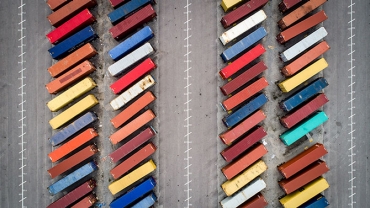
VAT Quick Fixes cross-border EU-trade - Update
25/10/19
In 2015/2016 the EU launched a plan to transform the current VAT system and create a single EU VAT Area by 2022. Several actions have already been set in motion, such as the special scheme for small businesses, taxation of e-commerce relating to platforms, intensified administrative cooperation and distance sales, but it is expected that the 2022 deadline for a definitive system will be pushed back several years.
The 2020 Tax Package and the legislative proposals ATAD2 and DAC6, including some measures for 2021 were adopted by the Senate on 17 December 2019. The adopted legislation and motions do not affect this contribution. As a result, this publication remains up-to-date up to and including 17 December 2019.

EU vat quick fixes
Effective 1 January 2020, Member States are required to implement four quick fixes aiming to improve the day-to-day functioning of the VAT system for EU cross-border B2B trade. Below we provide an overview of these Quick Fixes (QF).
These Quick Fixes have consequences for your administrative systems, VAT registrations, contracts, (electronic) documents and invoices.
QF 1: VAT identification number and EU Sales Listing
Currently, a business can apply the zero VAT rate for intra-Community supplies if - in short - it can prove that it supplies goods to another business and that the goods are transported to another Member State in the course of that supply.
According to CJEU case law, the VAT identification number of the customer is not a substantive requirement to apply the zero VAT rate and in bona fide cases where the substantive conditions are met, the zero VAT rate can also be applied without it. This will change under the new rules. The same is true for the periodical filing of an EU Sales Listing.
Obtaining and validating the customer’s VAT ID number as well as filing a correct recapitulative statements (EU Sales Listings) will be a hard condition for the application of the zero VAT rate.
Impact on your business
As a practical consequence, there is an increased need for businesses to include all VAT identification numbers of customers in their ERP systems. The reason is that they should be able to raise invoices stating the correct VAT-identification number of their customers and to submit EU Sales Listings with the correct information.
It is therefore important to validate these VAT identification numbers periodically (or even before each shipment) in the EU VIES-system. Proper documentation of these controls is also very important in this respect. This ensures that the zero VAT rate is correctly applied at the time of the intra-Community supply.
Also, the submission of a recapitulative statement (EU Sales Listing) with correct information will be a hard condition for the application of the zero VAT rate. A system will be introduced which allows the supplier to repair any omissions.
QF 2: Proof of transport
A new element is introduced in the EU VAT Implementing Regulation: a common framework for the documentary proof needed for application of the zero VAT rate to intra-Community supplies. The EU Regulation has direct effect and as such does not require implementation by the Member States.
In case of transport by or on behalf of the supplier, the proof should consist of two supporting documents drawn up independently of each other, e.g.: a signed CMR in combination with the transport insurance policy for the respective supply of goods.
When the buyer arranges for the transport, the supplier should also possess a written statement from the buyer/acquirer.
If the supplier is in possession of the required evidence, it is presumed that the goods have been transported from one EU Member State to another. The Tax Authorities may rebut this presumption if they can demonstrate that transportation did not take place after all.
It is important to note that these new rules do not affect current (Dutch) practice. All proof which is currently considered sufficient evidence on the basis of Dutch rules and CJEU/national case law, will continue to be accepted as sufficient proof of transportation. The Implementing Regulation is an add-on to the existing Dutch rules: it provides for a rebuttable presumption.
This Quick Fix will improve legal certainty for taxable persons. In addition, it allows taxable persons to standardise their approach to dealing efficiently with documenting evidence across the EU.
QF 3: Call-off stock
In case of call-off stock, a supplier moves goods to a warehouse/stocking location of a known customer to enable the customer to pick the goods from the stock at a later stage and trigger a VAT supply.
If a company transfers own stock to a warehouse in another EU Member State, the supplier must report a (fictitious) intra-Community supply in the Member State of departure and a corresponding intra-Community acquisition in the Member State of arrival. The subsequent removal of goods from that stock is a domestic supply in the country of the warehouse. By default, the transfer of stock and the subsequent supply require the supplier to register for VAT purposes in this EU country and to fulfill the relevant VAT obligations. A number of Member States already has local simplification rules to prevent registration, to reduce the administrative burden and to avoid "timing differences".
Mandatory harmonised call-off stock regime
The new rules on on-call-off stock provide for a uniform system as a result of which the transfer of call-off stock is treated equally in all EU Member States. Please note that the application of these call-off stock rules is not optional: it is a mandatory regime.
Under the new regime, subject to conditions the physical transfer does not constitute a fictitious intra-Community supply, so that the supplier does not have to register in the Member State of the customer. One of the conditions is that the goods are called off by the customer within one year.
The new regulation requires the supplier and the customer to record the movement of goods separately in their accounting records. The supplier must account for these goods in two separate, consecutive, recapitulative statements: one at the moment of the physical transfer and one at the moment the customer takes the goods from the call-off stock.
In case of goods that cannot be tracked individually, such as replaceable, similar and identical (bulk) goods, suppliers can use aggregated volumes to track the goods in their accounting records and to file the recapitulative statements. There is no apply if minor quantities of goods in call-off stock are lost, destroyed or stolen.
The Dutch tax administration's IT systems needed for this scheme will not be fully operational until 1 April 2020. Until then, in certain cases, entrepreneurs will not be able to submit recapitulative statements with respect to call-off stock. Yet, this does not appear to stand in the way of the application of this scheme.
We recommend businesses to assess the current VAT treatment of call-off and consignment stock and similar situations and gain insight into the steps necessary to comply with the VAT treatment under this Quick Fix. To be VAT compliant in 2020, it is key to align document governance with stock management data.
Update - Developments parlementary process
No transitional arrangements
There is no transitional arrangement for call-off stock transferred before 1 January 2020. The Dutch Tax Authorities will phase the new scheme, due to their IT implementation schedule.
EC Sales Listing for call-off stock
The call-off stock declaration is part of the European Sales Listing. Entrepreneurs who submit by means of software can already submit as from 1 January. As of 1 April, this is also possible via the internet portals PDO (Personal Domain Entrepreneurs) and MBDZ (“Mijn Belastingdienst Zakelijk”).
Entrepreneurs who submit their ESL on a quarterly basis can enter the data in the regular ESL for the first quarter. Entrepreneurs who have to submit a monthly ESL can submit the data for January and February in the March ESL.
QF 4: Chain transactions
Cross border chain transactions consist of successive supplies of goods between traders in more than one Member State, but with only one cross-border transport movement, usually from the first to the last party in the supply chain.
For VAT, this transport movement can only be assigned to one of the supplies in the chain and hence the zero VAT rate for intra-Community supplies can be applied only to one leg of the supply chain. The other supplies in the chain normally lead to ‘local’ VAT and to VAT-registrations in the respective Member State(s).
The assignment of the transport movement to one of the supplies in a chain often leads to discussions with the local tax authorities of the Member States involved. The result is uncertainty for businesses with regard to the application of the zero rate and increased administrative obligations. This is especially true, if a middle man arranges the transport, which has been the topic of numerous CJEU cases.
Identifying the intra-Community Supply in a cross-border supply chain
Under the new rules per 2020, the zero-rated intra-Community supply is by default assigned to the supply to the supplier in the supply chain who arranges the transport or has the transport arranged in their own name. Yet if such suppliers (middle men) are not the first company in the supply chain, and provide a VAT identification number of the Member State in which the dispatch commences, they are considered to perform the zero-rated intra-Community supply themselves. Under those circumstances, the supply to the middle man is a local supply and the supply by the middle man is the zero-rated intra-Community supply.
We recommend businesses to assess the current VAT treatment of supply chains
and gain insight in the steps necessary to comply with the VAT treatment under this Quick Fix. A clear and detailed overview of supply chains and the responsibility for transport per transaction are key to be VAT compliant in the future.
What can you do?
It is clear that material adjustments to your ERP systems are necessary in order to apply the zero rate with certainty and to make use of the rules for stock on demand. With data analysis tools, we can provide you with insight into your supply chain, perform a quick scan of your processes and help make your systems compliant. Interested in working with us? Please contact your PwC advisor.
Contact us




















